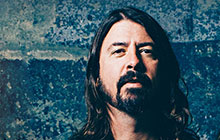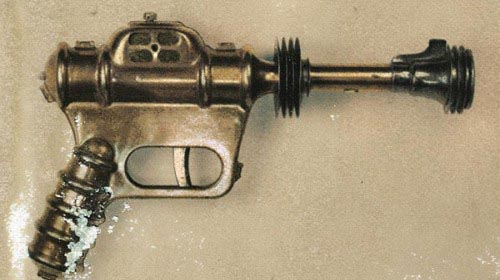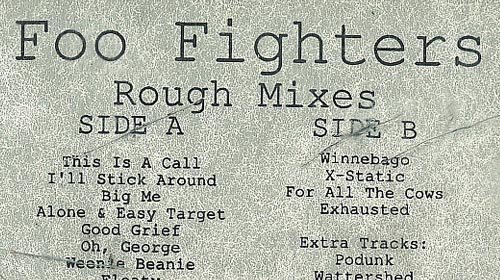Session Information
With a large collection of songs in the bank and record labels biting at his heels, the tail end of summer 1994 saw Dave Grohl make the decision to record an album. Unlike past recordings this wouldn’t just be a casual affair in friend Barrett Jones studio, he planned to book time in a professional studio and create a somewhat more polished record. The studio he settled on was Robert Lang Studios in Shoreline, Washington.
The studio was just a few blocks from his house and based on a recommendation he and the rest of Nirvana had visited the studio earlier in 1994 for what would ultimately be their last recording session. Happy with this past experience at Lang’s studio it made perfect sense for Grohl to head there again to record his album.
A week was booked from October 17th to 23rd, 1994 and whilst they weren’t using his studio this time, Dave still took along his friend Barrett Jones to produce the session. Around thirty or forty songs had been recorded by the pair over the previous six or so years and for this session, Dave had selected what be believed to be his best fifteen.
Day one naturally began with setting up and finding nice sounds, a simple process for the duo who’d been recording together for so long by this point. “[It] was a cinch for Barrett, whom I'd asked to produce since he was the one person in the world I felt comfortable singing in front of,” recalled Grohl. After around four hours of setting up equipment and mics, the duo was happy and ready to record at around 5 pm. With a running order for an album already decided Dave planned to simply record each song in order, and so the first song to be tackled was what would be track one, ‘This Is A Call’.
As with almost all his previous recordings with Barrett, Grohl recorded every instrument himself during the session, and the pair had perfected their own method to record quickly. Drums would be recorded first, Grohl’s strongest instrument, giving each song a solid base for everything else to work around. “[I would then] listen to playback while humming the tune in my head to make sure the arrangement [was] correct”, said Grohl. With the drum track locked in, next to be put to tape would be “two or three guitar tracks”, before finally adding a bass track.
“Everything was pretty much first take, so he could do about a song an hour after setting up,” recalled Jones of the process. Vocals would be saved for last, so once one instrumental was deemed fully complete, including overdubs, it was onto the next song.
Whilst Grohl did primarily record all the instrumental music himself, one other name did sneak onto the record. With Dave busy laying down tracks in the main live room Afghan Whigs lead singer and guitarist Greg Dulli visited the studio. The pair had previously worked together on the Backbeat Soundtrack in 1993 and initially, he just watched Grohl at work from the control room, in awe of his talents. “He'd do a whole song in about 40 minutes,” recalled Dulli. “I was completely fascinated by it. He could do it because he has perfect time. He'd lay down a perfect drum beat and work off that. He'd play drums, run out and play bass, and then put two guitar layers over the top and sing it.” Whilst watching Grohl surprised Dulli by asking him to contribute - “I was just watching him record, and he asked me if I wanted to play. I didn't even get out of my chair. He just handed me a guitar.” Dulli’s part was very minor according to Jones, a “sort of one note repeating thing.”
One of the last songs to be tracked was ‘Exhausted’, a song Grohl had first demoed in April 1993. During that recording Barrett used an old, dying no-name amplifier to get a dirty, grungy tone to the guitar track but with that now completely dead Jones did his best to replicate the sound with other equipment. Using a Pro Co Turbo Rat and other distortion effects Jones said he “was almost able to recreate the sound on the album session, but not quite.”
Equipment for the session was relatively limited by choice. Dave used the same Tama drum kit he’d used during Nirvana and most of the guitar tracks were recorded with just two models. The first was a tobacco sunburst Gibson Les Paul which, with the help of his best friend Jimmy Swanson, had been stripped and sprayed silver by Grohl. The other main guitar of choice was Dave’s treasured red Gibson Trini Lopez, with a Marshall JCM 900 used for amplification. For the ‘grungier’ guitar sounds, as well as the distorted vocal effects on songs like ‘Weenie Beenie’ and ‘Podunk’, a rather unique DIY solution nicknamed ‘The Can’ was concocted. A small battery powered Marshall amp was placed inside a gas can which would create a unique rough, distorted effect on both the guitar and the voice.
The instrumentals for all fifteen songs were completed by just the middle of the third day. “It became sort of a game,” said Grohl. “I wanted to see how little time it could take me to track 15 songs, complete with overdubs and everything. I was literally running from instrument to instrument, using mostly first takes on everything.”
The focus then turned to vocals and whilst most of the songs had written lyrics from previous demos, Grohl still found himself tweaking and re-working some of them in the studio. “By no means am I a lyricist,” said Grohl. “But a lot of times, the things you write down spur of the moment are most revealing. Now I look at them and some of them seem to actually have meaning. I had seven days to record fifteen songs, I was just concentrating on everything being as together as possible, having everything be tight and in sync. There wasn't too much time spent sitting on a chair thinking.” When recording with Barrett at his Laundry Room studio Grohl would usually double-track his vocals but during this session, with twenty-four recording tracks to play with rather than eight, he went one further and tripled his vocals on many songs, giving them an even fuller, more rounded sound.
Recording was complete by October 22nd with the final day at the studio dedicating to mixing. Barrett Jones lead the process which like recording, was lightning quick with no fancy gimmicks. By the end of the week, Dave Grohl had himself an album. Twelve songs were earmarked for the album itself, with the other three - ‘Winnebago’, ‘Butterflies’ and ‘Podunk’ – designated as ‘bonus tracks’. Once the rough mix was completed Dave Grohl wasted no time in heading to a cassette duplication shop in Seattle and ran off 100 copies of the session, even including a J-Card with the name he’d chosen for his ‘band’ and album – ‘Foo Fighters’.
The reason for the name was an attempt to try and hide his identity as the sole author of the music. At this stage, Grohl planned to create a low-key release and not put his name on it, so people listening would not know it was “that drummer from Nirvana” and be able to listen without bias or any preconceptions.
“I wanted to get an independent distributor to send it out into the world. Maybe 10,000, 20,000 copies, so that people would think, ‘God, who is this band Foo Fighters? I've never heard of them before’. I just wanted it to be this real anonymous release.”
His plans were unfortunately undone by his own generosity. Grohl handed out tapes of his album with the Foo Fighters name to friends, family and even fans in the street. It, therefore, didn’t take very long until word got out that Foo Fighters was in fact just Dave Grohl. “That fucking tape spread like the Ebola virus, leaving me with an answering machine full of record company jive,” recalled Grohl. “I'd give tapes to everybody. Kids would come up to me and say, ‘Nirvana was my favorite band’ and I'd say, “Well here, have this!” By January 1995, with the cat out of the bag and songs being played on the radio from the tapes Dave himself created, a bidding war had ensued between rival record labels, all eager to sign Dave Grohl and be the one to release his debut album. David Geffen Company (the label Nirvana were signed to upon their demise) and Capitol Records were reported in the media as the two front-runners in acquiring his signature.
Whilst this was going on, Dave Grohl knew his plans for a small, anonymous release were out of the window. Talk soon moved to Dave forming an actual band of musicians to go out on the road and properly promote the record. Grohl was talented enough to record all the instruments himself in the studio, but even he wouldn’t be able to manage the feat live.
Dave started jamming with a few people in casual auditions, including prolific session drummer Josh Freese and former Nirvana bandmate Krist Novoselic, but none were working out. In the case of Novoselic, the pair just felt it would be too weird being in a band together again without Kurt. Grohl, therefore, had to continue searching.
Sunny Day Real Estate was an alt-rock band from Washington, D.C. and in late 1994 rumors were rife that the band was set to split. These rumors were confirmed in early 1995 when the band announced they were disbanding. Dave Grohl’s wife at the time, Jennifer Youngblood, was friends with the girlfriend of bassist in the band, Nate Mendel. Mendel and Grohl first met at a Thanksgiving party in November and once it was clear that SDRE was finished, Grohl invited Mendel to be the first recruit to Foo Fighters.
One of the people Dave Grohl gave his tape to was Pat Smear, who’d most recently played with Dave as the second live guitarist for Nirvana from mid-1993 through to the end. “Not long after meeting Nate, I gave a tape to Pat. I knew that the band would need two guitars but didn't think that Pat would want to commit to anything (or that he would even like the music).” To Dave’s surprise, Pat not only liked the tape, but he was also interested in joining up.
“After you've been in the coolest band ever, what do you do?” Smear asked himself at the time. “I sat on the couch with the remote control in my hand for a year. I didn't know if I ever wanted to be in a band again. I was just working on solo stuff. Dave and I had kept in touch and I had heard about his tape, but I didn't know what to expect. When I heard the tape, I flipped. Dave gave it to me at a club and I went home. After I listened to it, I went back to the club. But I didn't want to ask to join the band. I waited for him to ask me.”
With guitar and bass roles seemingly filled and Dave planning to assume the frontman role, just one position was left vacant - drummer. “Enter William Goldsmith” proclaimed Grohl, referring to the drummer of Sunny Day Real Estate alongside Mendel. “Though I had never seen or heard them, I knew a little about them. I saw them play their last few shows in Seattle and was blown away by Nate and Will. So, you can imagine my first reaction when I heard the band was calling it quits. I gave the two of them tapes through my wife's friend and prayed they'd enjoy them,” he said.
The four got together to jam and see if they would all gel together, but also just as important was for Grohl to lay out his vision for the band, and the role he saw his new colleagues in. “I didn't want this to be some ridiculous solo project. I sure as fuck didn't consider Pat, Nate and William my backing band. I realized this was a bizarre foundation for a band, but that's exactly what my goal was: to have another band. We got together and it was soon apparent that this was to be that next band. I wanted everyone to have the freedom to do whatever they wanted to do within the songs, each member as important as the next.”
With plans far grander than ever initially planned, it was decided that the rough mix created during the final day at Robert Lang Studios needed a little more work. In February 1995 the band headed to Arcata, California and ‘The Shop’, a mixing studio in the town headed up by Rob Schnapf and Tom Rothrock of Bongload Records.
Mixing was completed on a 32 channel API DeMedio console, custom built by Frank DeMedio in 1972 for Wally Heider Recording's 'Studio 4', with a Stephen's 24 track 2” tape machine used for playback. Processors used in the mixes included an Eventide Omnipressor compressor for vocals and guitar solos, an Alan Smart stereo compressor for “squashing” the drums and mixing them back in as well as being used over the entire mix. Other processors included UREI 1176 and LA3A compressors as well as an Echoplex for delays and a “crappy digital reverb”. Overall the final mixes were “nothing crazy” according to Schnapf, noting that he’d mixed the song ‘Big Me’ in just 20 minutes.
The eventual winners of the label bidding war were Capitol Records, however, with Grohl holding all the aces during negotiations, he was very shrewd in the deal he signed. Rather than simply handing over the rights to the songs to Capitol, Grohl formed his own record label, Roswell Records, who would retain 100% control over the music. Roswell would then merely allow Capitol to widely distribute the music, but never giving them full control.
The album saw official release on Independence Day 1995, available on CD, Vinyl and Cassette. As originally planned, the album featured twelve of the fifteen songs recorded, and whilst ‘Winnebago’ and ‘Podunk’ were used as B-Sides alongside the first single ‘This Is A Call’, the final song of the fifteen recorded, ‘Butterflies’, has never seen an official release. It does, however, circulate among fans thanks to being on the original cassettes Dave handed out.
Whilst William Goldsmith, Pat Smear and Nate Mendel played no part in the recording of the album they were featured on the artwork for the record and received a percentage of the royalties.





